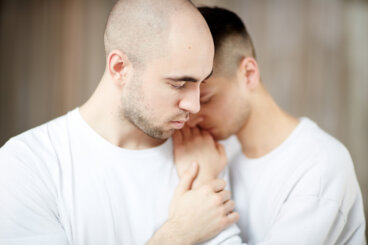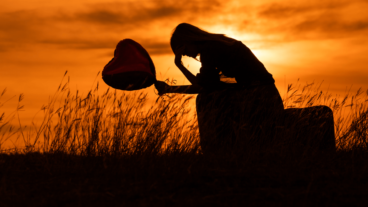The Seven Different Types of Depression

According to the field of psychiatry and its Diagnostic and Statistical Manual of Mental Disorders (or DSM-5), there are seven different types of depression. However, these classifications are flexible and subject to change.
One of the main problems with psychiatry is diagnosis, as it tends to be subjective because it depends on a psychiatrist’s interpretation of symptoms. That becomes an even bigger obstacle when you think about the many types of depression there are according to the DSM-5.
Thus, you should always take a psychiatric diagnosis with a grain of salt because it could end up changing. Psychiatrists usually make a more definitive diagnosis after they’ve been seeing you for a while. Still, it’s worth knowing the different types of depression.
The Different Types of Depression
1. Major Depressive Disorder
This is the most common form of depression, in its strictest sense as a mental illness. It’s also the form of depression with the most associated symptoms. One of its main characteristics is extreme apathy towards life and the world in general.
In serious cases, this kind of depression can lead to something called “catatonic depression”. What that means is that inactivity takes over and you might even stop eating. There are also cases where major depressive disorder is accompanied by episodes of delirium.
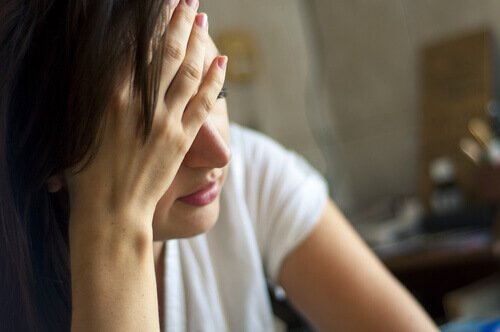
2. Persistent Depressive Disorder
This used to be known as dysthymia. Although it’s similar to major depressive disorder, its symptoms aren’t as severe. Unfortunately, it still involves apathy, hopelessness, and a feeling of melancholy.
All those symptoms are chronic, meaning they stick around for long periods of time with no improvement. They may go away for a little while, but it’s also possible for them to get worse and lead to a deeper state of depression.
3. Mixed Anxiety-Depressive Disorder
This is another type of depression (as defined by the field of psychiatry) that affects a lot of people. Its main characteristic is that you experience a mixture of periods of depression and periods of anxiety.
The depression doesn’t lead to extreme inactivity and apathy and the anxiety doesn’t cause any major crises. But it does draw on for a long time and can lead people to think it’s part of who they are.
4. Atypical Depression
This also goes by the name “depression with atypical features”. The main difference from major depression is that with atypical depression, your mood can improve if you have things you see as positive happen to you or around you.
It’s also more common for people with this type of depression to have a better appetite and sleep schedule. Some people who suffer from it say they experience heaviness in their arms and legs and feel a sense of rejection from other people.
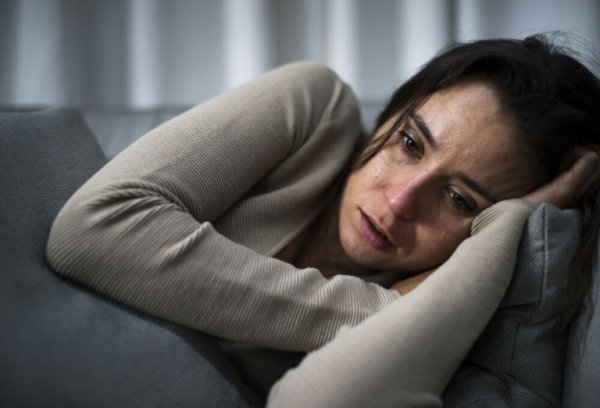
5. Seasonal Affective Disorder
As the name suggests, the main characteristic of seasonal affective disorder is that it stops and starts depending on the season. It tends to start around the end of fall or beginning of winter and go away in spring or summer. It seems appropriate that its acronym is SAD.
The switch from one phase to another is usually sudden. You start to feel extremely sleepy, constantly tired, and carbs start to seem super appealing. Of course, you’ll also experience melancholy, apathy, and have no desire to do anything.
6. Bipolar Disorder
Bipolar disorder is similar to mixed anxiety-depressive disorder, but with much more intense symptoms. The periods of depression lead to serious mood swings and have all the characteristics of major depression.
Meanwhile, the periods of anxiety are characterized by mania and manic behavior. The symptoms are an acceleration of thought processes, euphoria, hyperactivity, trouble sleeping, irritability, and a tendency for compulsive behavior.
7. Cyclothymia
The biggest characteristic of cyclothymia is mood instability. Although it’s similar to bipolar disorder and mixed anxiety-depressive disorder, there are two major differences between them. The first: the symptoms are much less intense. The second: there are also periods of “normalcy”.
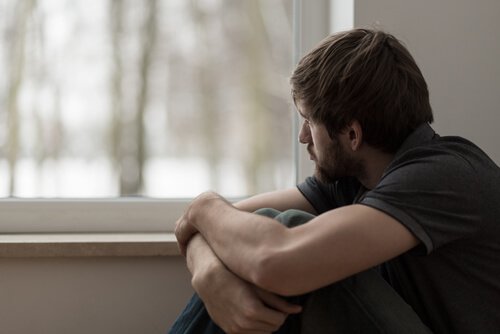
The changes cyclothymia causes often go unnoticed. You become a bit sadder or a bit more manic, but not enough for it to be noticeable. This can also happen in a very short period of time, maybe a week or less.
As you can see, the different types of depression according have a lot of similar characteristics, but also some differences. This is why it can be so hard to reach a correct diagnosis.
According to the field of psychiatry and its Diagnostic and Statistical Manual of Mental Disorders (or DSM-5), there are seven different types of depression. However, these classifications are flexible and subject to change.
One of the main problems with psychiatry is diagnosis, as it tends to be subjective because it depends on a psychiatrist’s interpretation of symptoms. That becomes an even bigger obstacle when you think about the many types of depression there are according to the DSM-5.
Thus, you should always take a psychiatric diagnosis with a grain of salt because it could end up changing. Psychiatrists usually make a more definitive diagnosis after they’ve been seeing you for a while. Still, it’s worth knowing the different types of depression.
The Different Types of Depression
1. Major Depressive Disorder
This is the most common form of depression, in its strictest sense as a mental illness. It’s also the form of depression with the most associated symptoms. One of its main characteristics is extreme apathy towards life and the world in general.
In serious cases, this kind of depression can lead to something called “catatonic depression”. What that means is that inactivity takes over and you might even stop eating. There are also cases where major depressive disorder is accompanied by episodes of delirium.

2. Persistent Depressive Disorder
This used to be known as dysthymia. Although it’s similar to major depressive disorder, its symptoms aren’t as severe. Unfortunately, it still involves apathy, hopelessness, and a feeling of melancholy.
All those symptoms are chronic, meaning they stick around for long periods of time with no improvement. They may go away for a little while, but it’s also possible for them to get worse and lead to a deeper state of depression.
3. Mixed Anxiety-Depressive Disorder
This is another type of depression (as defined by the field of psychiatry) that affects a lot of people. Its main characteristic is that you experience a mixture of periods of depression and periods of anxiety.
The depression doesn’t lead to extreme inactivity and apathy and the anxiety doesn’t cause any major crises. But it does draw on for a long time and can lead people to think it’s part of who they are.
4. Atypical Depression
This also goes by the name “depression with atypical features”. The main difference from major depression is that with atypical depression, your mood can improve if you have things you see as positive happen to you or around you.
It’s also more common for people with this type of depression to have a better appetite and sleep schedule. Some people who suffer from it say they experience heaviness in their arms and legs and feel a sense of rejection from other people.

5. Seasonal Affective Disorder
As the name suggests, the main characteristic of seasonal affective disorder is that it stops and starts depending on the season. It tends to start around the end of fall or beginning of winter and go away in spring or summer. It seems appropriate that its acronym is SAD.
The switch from one phase to another is usually sudden. You start to feel extremely sleepy, constantly tired, and carbs start to seem super appealing. Of course, you’ll also experience melancholy, apathy, and have no desire to do anything.
6. Bipolar Disorder
Bipolar disorder is similar to mixed anxiety-depressive disorder, but with much more intense symptoms. The periods of depression lead to serious mood swings and have all the characteristics of major depression.
Meanwhile, the periods of anxiety are characterized by mania and manic behavior. The symptoms are an acceleration of thought processes, euphoria, hyperactivity, trouble sleeping, irritability, and a tendency for compulsive behavior.
7. Cyclothymia
The biggest characteristic of cyclothymia is mood instability. Although it’s similar to bipolar disorder and mixed anxiety-depressive disorder, there are two major differences between them. The first: the symptoms are much less intense. The second: there are also periods of “normalcy”.

The changes cyclothymia causes often go unnoticed. You become a bit sadder or a bit more manic, but not enough for it to be noticeable. This can also happen in a very short period of time, maybe a week or less.
As you can see, the different types of depression according have a lot of similar characteristics, but also some differences. This is why it can be so hard to reach a correct diagnosis.
All cited sources were thoroughly reviewed by our team to ensure their quality, reliability, currency, and validity. The bibliography of this article was considered reliable and of academic or scientific accuracy.
- APA (2014). Manual estadístico de diagnóstico de los trastornos mentales. Editorial médica panamericana.
- Bains, N., & Abdijadid, S. (2023). Major depressive disorder. StatPearls. https://www.ncbi.nlm.nih.gov/books/NBK559078/
- Cleveland Clinic. (2023). Atypical Depression. Consultado el 5 de julio de 2023. https://my.clevelandclinic.org/health/diseases/21131-atypical-depression
- González-Villén, M. (2017). Impacto del DSM-5 en variables de psicopatología, evaluación y tratamiento de problemas del estado de ánimo en adultos. [Tesis de Grado]. Universidad de Jaén. https://crea.ujaen.es/handle/10953.1/5603
- National Institute of Mental Health. (s.f.). Disruptive Mood Dysregulation Disorder: The Basics. Consultado el 5 de julio de 2023. https://www.nimh.nih.gov/health/publications/disruptive-mood-dysregulation-disorder#:~:text=What%20is%20disruptive%20mood%20dysregulation,DMDD%20symptoms%20are%20severe.
- National Institute of Mental Health. (2022). Major Depression. Consultado el 5 de julio de 2023. https://www.nimh.nih.gov/health/statistics/major-depression
- National Institute of Mental Health. (s.f.). Persistent Depressive Disorder (Dysthymic Disorder). Consultado el 5 de julio de 2023. https://www.nimh.nih.gov/health/statistics/persistent-depressive-disorder-dysthymic-disorder
- Nübel, J., Guhn, A., Müllender, S., Le, H. D., Cohrdes, C., & Köhler, S. (2020). Persistent depressive disorder across the adult lifespan: results from clinical and population-based surveys in Germany. BMC psychiatry, 20(1), 1-13. https://www.ncbi.nlm.nih.gov/pmc/articles/PMC7011512/#:~:text=Primary%20data%20indicate%20that%20up,%25%20%5B16%E2%80%9318%5D.
This text is provided for informational purposes only and does not replace consultation with a professional. If in doubt, consult your specialist.
